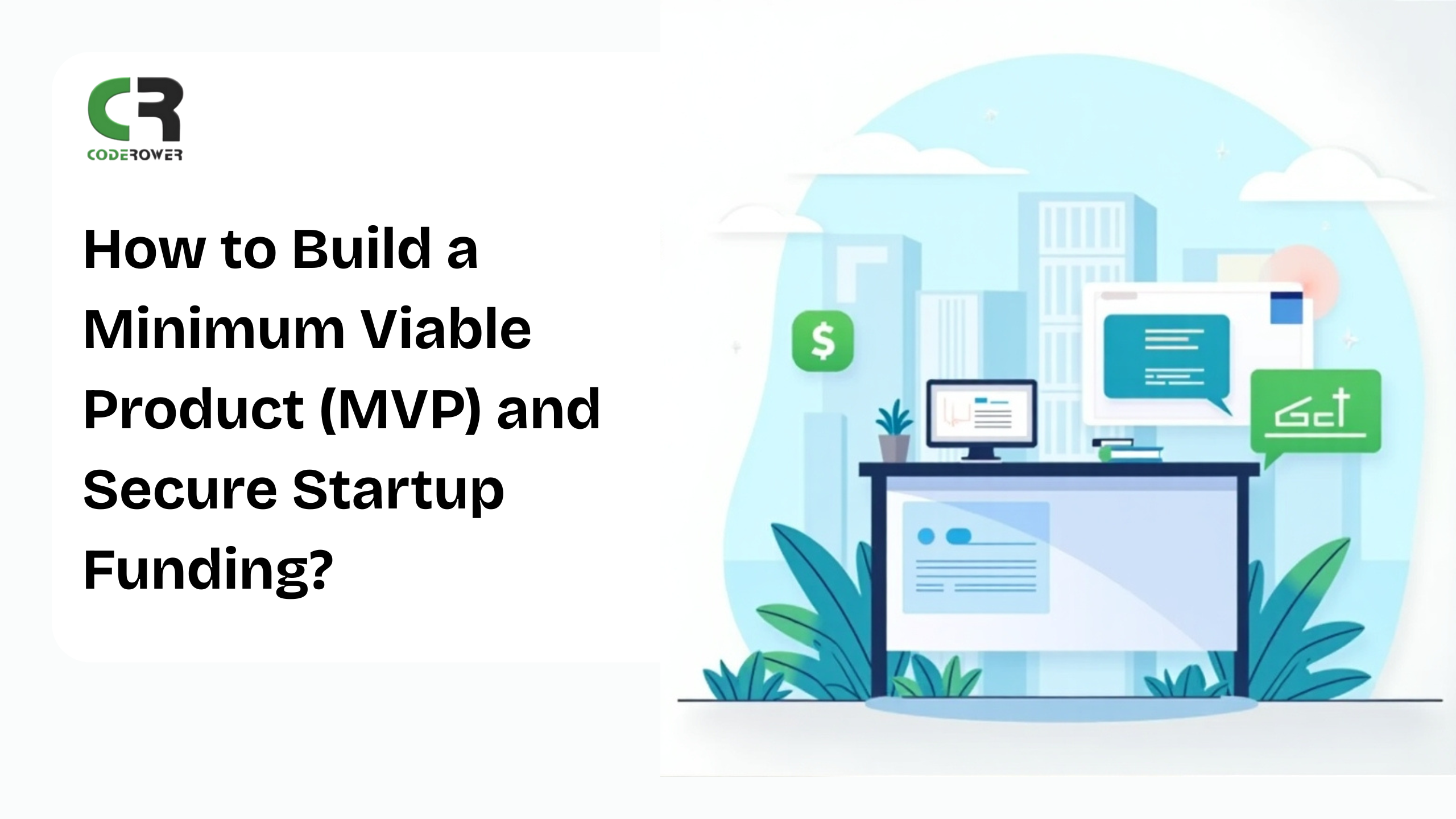How to Build a Minimum Viable Product (MVP) and Secure Startup Funding?

Launching a startup is exciting, but it can also be overwhelming. Entrepreneurs often face the challenge of turning an idea into a successful business while minimizing risks. One proven strategy to test your concept and attract investors is building a Minimum Viable Product (MVP). An MVP is not the final product but a functional version that showcases your core idea, allowing you to collect user feedback and validate your business model before investing heavily in full-scale development.
But how do you build an MVP effectively? How can you secure the funding needed to scale your startup? Let's break it down step by step with practical insights and examples.
What Exactly Is an MVP, and Why Does Your Startup Need One?
An MVP, or Minimum Viable Product, is the simplest version of your product that solves the primary problem of your target audience. It focuses on essential features, ensuring that you don't spend too much time or money on features users might not even need.
For example, when Uber started, it didn't have multiple payment methods, ride-sharing options, or driver ratings. It simply connected passengers with drivers and allowed them to make payments via credit card. That basic version validated the concept, leading to rapid growth and investor interest.
For startups, an MVP:
- Reduces development cost and risk
- Helps attract early adopters
- Validates the business idea quickly
- Makes it easier to pitch investors with real user data
How Do You Define the Core Features of Your MVP?
Building an MVP requires strategic thinking. Rather than including every feature you envision, you need to focus on core functionalities that deliver value.
Steps to identify core features:
- Define your target audience — Understand who you are building the product for and what problems you're solving.
- Map out user journeys — Identify the essential steps users will take while using your product.
- Prioritize features based on impact — Focus only on features critical to solving the primary problem.
- Create wireframes or prototypes — Visualize how your MVP will work before development begins.
Remember, an MVP is about delivering value, not complexity.
How Do You Plan Your MVP?
Planning an MVP is more about understanding your audience and business goals than coding. Here's how to do it:
1. Identify Your Target Problem
Ask yourself: What problem am I solving? Who is my ideal customer? For example, if you are building a food delivery app for small towns, the core problem might be the lack of quick and reliable delivery services.
2. Define Core Features
List all possible features and separate the “must-haves” from “nice-to-haves.” Focus only on features that directly solve your customer's pain points.
3. Map the User Journey
Think about how a user will interact with your product from start to finish. What is the first thing they see? How do they perform the main action? This helps you prioritize features logically.
4. Choose the Right Tech Stack
Depending on whether you're building a mobile app, web app, or software platform, choose an appropriate tech stack. Partnering with an experienced custom mobile app development company can save you significant time and cost.
How Do You Build an MVP?
Building an MVP is a mix of design, development, testing, and launch. Here's a practical roadmap:
Step 1: Build Wireframes and Prototypes
Create a visual representation of your product before writing any code. Tools like Figma or Adobe XD can help in designing UI/UX.
Step 2: Develop the Core Functionality
Focus only on primary features. If you are creating an online learning platform, start with essential features like course upload, student login, and payment integration — skip advanced analytics or AI recommendations for later.
Step 3: Testing and Feedback
Before launching, conduct beta testing. Share the MVP with a small group of real users and collect feedback. Fix issues and make small improvements without overcomplicating the product.
Step 4: Launch and Track
Release your MVP to the market. Use analytics tools to track user behavior, retention rate, and feature usage. This data will be critical when approaching investors.
How Do You Select the Right Technology Stack for Your MVP?
Your choice of technology stack will directly affect your MVP's performance, scalability, and development speed. While the selection varies based on the product type (mobile, web, or hybrid), some general factors to consider are:
- Scalability — Can your product handle increased users in the future?
- Time to market — How quickly can your team develop and launch?
- Security — Especially critical for industries like fintech and healthcare.
- Developer availability — Choose technologies supported by experienced developers.
For mobile apps, working with a custom mobile app development company helps ensure you get expert advice on selecting the most efficient frameworks, whether iOS, Android, or cross-platform. Similarly, custom web app development ensures your digital product is reliable and user-friendly from the start.
How Can You Test and Validate Your MVP?
Releasing an MVP is not the end goal — it's the beginning of the learning process. Once your MVP is launched, collect feedback from real users and use that data to improve.
Best practices for MVP testing and validation:
- Use analytics tools to track user behavior.
- Conduct surveys and interviews for direct feedback.
- Identify key performance indicators (KPIs) like retention rate, churn, and feature usage.
- Iterate quickly to enhance the product.
This approach gives investors confidence that you're building a data-driven product.
How Does an MVP Help in Securing Startup Funding?
Investors need more than just an idea — they need proof of concept. An MVP acts as tangible evidence of your product's potential, reducing investor risk. Here's why an MVP makes it easier to secure funding:
- Shows product-market fit with real users.
- Provides data-backed insights on product performance.
- Demonstrates your team's ability to execute quickly and efficiently.
When presenting to investors, highlight how the MVP has solved a real problem, its user adoption metrics, and the potential roadmap for scaling.
How Do You Find Investors After Building an MVP?
Having an MVP gives you a major advantage because you are not just pitching an idea — you are pitching a working product with real users. Here's how to secure funding:
1. Angel Investors and Venture Capitalists
Approach angel investors or VC firms who invest in your industry. Show them how your MVP is solving a real problem and demonstrate growth potential using early user data.
2. Crowdfunding Platforms
Websites like Kickstarter and Indiegogo are great for raising funds if your product appeals to a large consumer audience.
3. Startup Accelerators
Programs like Y Combinator or Techstars provide funding, mentorship, and networking opportunities. An MVP increases your chances of being selected.
4. Government Grants and Startup Loans
Many governments offer funding programs for innovative startups, especially in tech. Check for local opportunities in your region.
5. Networking and Pitch Events
Attend startup events, hackathons, and meetups to connect with potential investors. Presenting a live demo of your MVP at such events increases credibility.
What Are the Steps to Secure Funding After Building Your MVP?
After your MVP is live, the next step is convincing investors that your product deserves funding. Here's how to do it effectively:
- Prepare a strong pitch deck — Include your product vision, problem statement, market size, MVP success metrics, and financial projections.
- Show traction — Highlight real user data, testimonials, and adoption rates.
- Target the right investors — Focus on angel investors, venture capitalists, or accelerators that specialize in your industry.
- Leverage government schemes and startup incubators — Many regions offer grants and funding opportunities for early-stage startups.
- Highlight your team and technology — Investors want to know you have the right team and tech stack to scale.
Real-Life Example of MVP Success
Let's take the example of Airbnb. Initially, the founders faced difficulties paying rent and decided to rent out an air mattress in their apartment. They built a simple website showcasing their offer — this was their MVP. Despite being small-scale, it validated demand for affordable short-term stays. Today, Airbnb is valued in billions and operates globally.
Similarly, Dropbox's MVP was just a simple video showing how their file synchronization worked, which attracted thousands of beta users even before the product launch.
The key takeaway? Focus on solving one problem well and use your MVP to prove demand before scaling up.
Why Is Partnering with the Right Tech Team Critical?
Even with the best idea, an MVP can fail if it is poorly executed. Choosing the right technology partner ensures quality, scalability, and cost-efficiency. Working with a custom software development company allows you to create tailored solutions that meet your business goals and user expectations without unnecessary features.
An experienced custom application development company can also guide you on future scaling, ensuring your MVP transitions smoothly into a full-fledged product when you are ready.
How Can CodeRower Help You Build an MVP?
CodeRower is an industry-leading custom software development company specializing in delivering innovative, scalable, and robust digital solutions. Whether you need custom mobile app development services, custom web app development, or bespoke software development services, CodeRower ensures your MVP is built with precision and speed.
With expertise in custom application development services, CodeRower not only develops the technical core of your MVP but also helps you strategize features, choose the right technology stack, and ensure seamless user experience. Their team follows agile methodologies, meaning you get faster delivery, continuous improvements, and transparent communication.
What makes CodeRower stand out?
- Deep expertise in building MVPs across industries
- Proven track record of delivering reliable software solutions
- Ability to scale products from MVP to full-fledged enterprise-level applications
- End-to-end support, from idea validation to launch and post-launch scaling
If you want your startup to move from concept to funding faster, partnering with a skilled custom software development agency like CodeRower gives you a strong competitive advantage.
Final Thoughts: Why Build an MVP Before Seeking Funding?
Investors are cautious about backing unproven ideas. An MVP shows that you are serious, have validated your concept, and are already solving a real problem. It reduces perceived risk and increases your chances of securing funding.
By focusing on core features, gathering feedback, and iterating, you create a lean and market-ready product. Whether you are an early-stage entrepreneur or an established business looking to innovate, an MVP is your gateway to long-term success.
If you want to build a scalable MVP quickly and effectively, consider partnering with experts who understand product development inside out. Companies like CodeRower not only handle the technical aspect but also bring strategic insight, ensuring your startup is ready to impress both users and investors.
Frequently Asked Questions (FAQ)
1. How long does it take to build an MVP?
Depending on complexity, it usually takes 2–6 months. Working with experienced teams can reduce this timeline.
2. Do I need a technical co-founder to build an MVP?
Not necessarily. You can partner with a professional software development company to handle the technical aspects.
3. How much does MVP development cost?
The cost varies based on features, design, and technology stack, typically ranging from $15,000 to $50,000.
4. Should I build an MVP for mobile, web, or both?
Choose the platform based on your target audience. If users are mostly mobile-based, start with a mobile app MVP.
5. How do investors evaluate an MVP?
They look for user traction, market potential, team strength, and scalability. Having real user feedback significantly increases your chances of funding.
- Art
- Causes
- Best Offers
- Crafts
- Dance
- Drinks
- Film
- Fitness
- Food
- Jogos
- Festival
- Gardening
- Health
- Início
- Literature
- Music
- Networking
- Outro
- Party
- Religion
- Shopping
- Sports
- Theater
- Wellness



